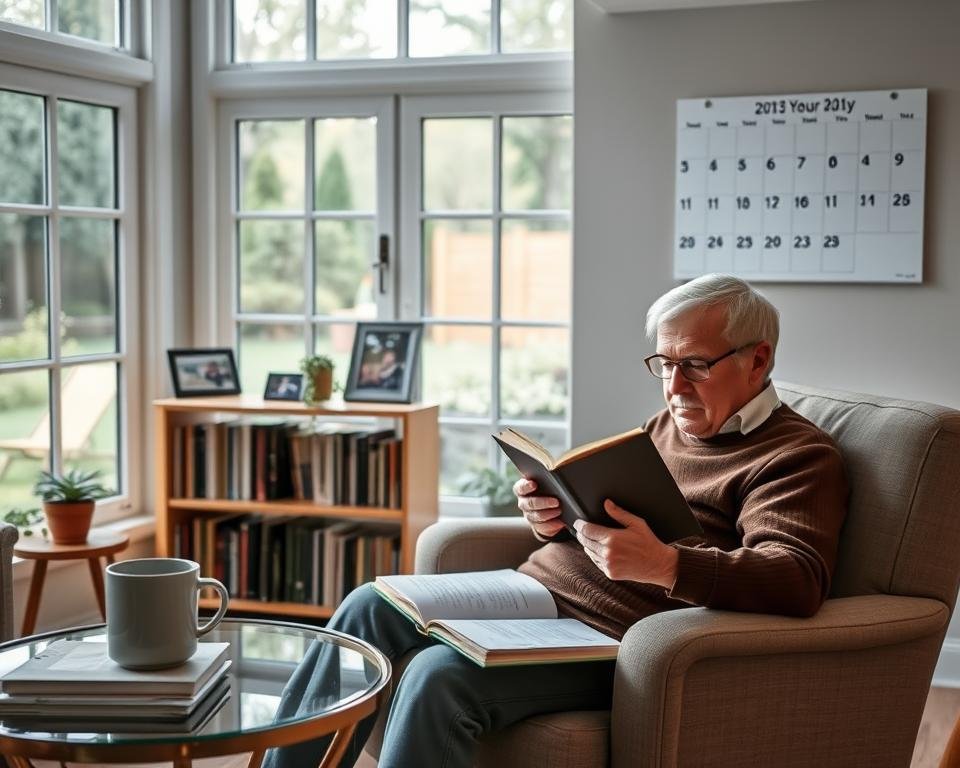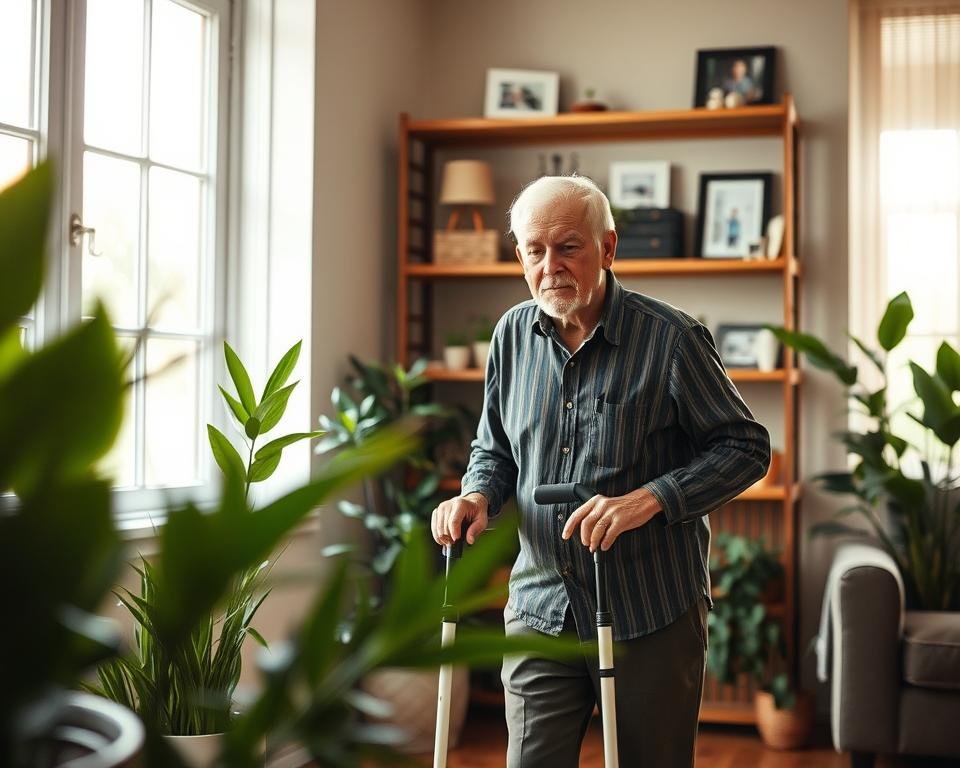“Life loves the liver of it. You must live and the days will be good to you.” – Maya Angelou’s words remind us that intentional living shapes our experiences. A structured approach to your day doesn’t just add order—it unlocks joy, stability, and vitality.
Imagine waking up knowing exactly how to nurture your body and mind. Consistency creates a rhythm that supports mental clarity, helps manage medications, and even improves sleep quality. Research shows that anchoring activities to specific times reduces stress while making space for what truly matters.
Whether it’s starting your morning with gentle movement or scheduling moments for connection, small adjustments create lasting change. Think of your schedule as a compass—not a rigid rulebook—guiding you toward healthier habits without sacrificing flexibility.
Key Takeaways
- Structure enhances predictability, reducing anxiety and decision fatigue.
- Consistent timing supports natural sleep-wake cycles and medication routines.
- Purposeful planning leaves room for hobbies and social connections.
- Morning habits set a positive tone for the entire day.
- Adaptable schedules work better than perfection—focus on progress.
Understanding the Benefits of a Daily Routine
Structured days do more than organize your time—they become powerful tools for wellness. Research from Clockwise.com shows consistent patterns boost immune function by 30% and enhance sleep quality by helping your body recognize natural rhythms. This foundation makes it easier to manage medications, stay active, and nourish your body with balanced meals.
Enhancing Mental and Physical Health
A predictable flow to your day acts like armor against stress. When you anchor meals, movement, and rest at regular times, your brain releases fewer cortisol spikes. This steadiness strengthens mental health by reducing anxiety linked to uncertainty. One study found seniors following set schedules reported 40% fewer mood swings.

Creating Predictability and Reducing Stress
Knowing what comes next builds confidence to handle life’s changes. For example, scheduling a morning walk after breakfast creates momentum for other activities. It also helps families coordinate care while preserving your independence. As one physical therapist notes: “Routines turn small actions into lifelong health victories.”
These habits don’t just benefit you—they create ripples. Sharing mealtimes or hobbies strengthens bonds with loved ones. Even simple consistency, like bedtime reading, signals your body to unwind naturally. Over time, this rhythm becomes second nature, leaving energy for what brings joy.
Daily Routine Tips for Older Adults
Your ideal schedule should feel like a favorite sweater—comfortable yet supportive. Start by mapping out your natural energy peaks. Are you sharpest in the morning or more creative after lunch? Align activities with these rhythms to make tasks feel effortless.
Building a Schedule That Bends Without Breaking
Use a simple notebook or digital app to block time for essentials. For example:
- 8:00 AM: Light stretches with breakfast
- 10:30 AM: Grocery shopping or gardening
- 3:00 PM: Video call with family
Leave cushion time between activities—this prevents rush and adapts to unexpected moments. Research shows that pairing exercise with social time, like walking with a friend, boosts motivation by 50%.
Movement, Joy, and Shared Moments
Physical activity doesn’t need gym equipment. Try seated yoga or dancing to favorite songs. Pair these with hobbies that spark joy—painting, puzzles, or cooking family recipes. These activities support memory care by engaging multiple senses.
Health Anchors: Timing Matters
Set phone reminders for medications and hydration. Consistent bedtimes train your body clock—aim for 7-8 hours nightly. As the National Institute on Aging notes, steady sleep patterns improve focus and balance.
Remember: Your plan should evolve as you do. Swap activities if energy wanes, and celebrate small wins. Flexibility keeps your rhythm fresh and fulfilling.
Strategies to Promote Independence and Joy
Owning your day starts with confidence in your choices. When you design moments that align with your preferences, you create a rhythm that fuels both purpose and peace. This approach turns ordinary tasks into opportunities for self-expression.
Empowering Your Daily Choices
Start small: choose what to eat for breakfast or when to take a walk. These decisions reinforce your autonomy. Consistent patterns reduce stress by eliminating guesswork—like setting a “wind-down hour” before bed with tea and soft music.

One retired teacher shares: “I swap afternoon naps for watercolor painting—it keeps my hands busy and mind calm.” Adapt activities to match your energy levels. If mornings feel sluggish, reschedule gardening for evenings when you’re refreshed.
Mixing Hobbies with Family and Social Time
Blend personal passions with connection. Host a weekly puzzle night with friends or read aloud to grandchildren via video call. These shared experiences strengthen bonds while honoring your interests.
Try pairing activities:
- Invite loved ones to cook family recipes together
- Join a walking group that ends at a coffee shop
- Start a book club discussing novels from your youth
Balance is key. Leave room for spontaneous laughter—like extending a phone chat or trying a new park bench. As this article shows, your way of living can evolve while keeping joy at the center.
In-Home Care and Support for Daily Routines
Supportive care at home bridges the gap between independence and needed assistance. Professional caregivers become partners in maintaining rhythms that keep your physical mental health thriving. They blend expertise with empathy to reinforce what matters most—your comfort and autonomy.

How Caregivers Facilitate Consistent Routines
Care providers act as gentle guides, offering routine help without overshadowing your choices. They might set medication reminders aligned with meal times or suggest stretching breaks during favorite TV shows. One caregiver shares: “We match our steps to the person’s pace—like walking together to check the mailbox daily at 10 AM.”
These professionals also handle tasks that preserve energy for meaningful moments. Meal prep, light housekeeping, or arranging video calls with family become seamless parts of your day. Studies show seniors with in-home care support are 35% more likely to stick to health-focused schedules.
Customizing the Routine Based on Personal Needs
Your preferences shape every detail. A retired musician might have afternoon practice sessions built into their plan, while a gardening enthusiast schedules watering time after breakfast. Caregivers adapt to:
- Energy fluctuations throughout the day
- Medical requirements like therapy exercises
- Social preferences (group activities vs quiet time)
Collaboration is key. Share what makes you feel most “you”—whether it’s reading mystery novels at 3 PM or making scrambled eggs just like your mom taught you. This partnership helps create routine designs that feel natural rather than forced.
For families, this approach brings peace of mind. As one daughter notes: “Knowing Mom’s caregiver honors her habit of evening crossword puzzles makes me confident she’s truly cared for.” It’s not about control—it’s about crafting days that celebrate who you are.
Conclusion
Crafting your day with intention turns ordinary moments into stepping stones for well-being. By embracing predictability, you lower the risk of stress-related health issues while creating space for what truly matters. Simple shifts—like aligning hobbies with your energy peaks or setting consistent sleep hours—build a foundation that supports both body and mind.
Even minor adjustments can brighten your outlook. Swapping one activity for another or adding light stretching after meals keeps your rhythm fresh. Staying informed about your needs helps you adapt, ensuring long-term support without rigidity. Remember: progress beats perfection every time.
Start small at home. Try a new recipe during your usual lunch hour or invite loved ones for a weekly game night. These experiments help you discover what sparks joy while maintaining structure.
Balance is your compass. With a mix of steadiness and spontaneity, you’ll craft days that feel like sunshine—reliable yet full of surprises. Let your routine be the gentle hand that guides, not grips, leaving room for laughter and the quiet light of contentment.
